As a full-service live entertainment agency, TSE provides local production along with its other services. For that reason, we like to stay on top of music trends that impact the production of live entertainment events. One trend in the music industry we are following is the explosion in spatial audio recordings taking place.
Spatial Audio or Three-Dimensional Audio Has a Long History
You might not recognize the term “spatial audio” but you are probably familiar with surround sound audio, whether it is part of your home theater audio system or experience at movie theaters. DTS, Dolby Atmos, 360-Sound, Ambeo, Spatial Audio, Binaural, are the formats. Immersive or 3-dimensional audio is the result.
What’s all the fuss about? After all, considering that spatial audio itself is nothing new. It’s been around in some form since the 1950s. In the early 70s I was excited that a new party boat I was buying came with an 8-track cartridge tape deck and quadraphonic sound. Little did I know at the time that I bought at the peak of this audio technology. The world went back to stereo and 8-track cartridge went the way of the Hippie movement. Unfortunately, so did my boat. It was fun while it lasted. If you want to relive those days, you can still find 8-track players for sale on eBay and other sites.
Spatial audio back then was both difficult and expensive to produce. There wasn’t the demand to support it on the consumer side since it wasn’t available on vinyl and would require a costly home audio system.
First Efforts to Bring Surround Sound to Live Entertainment Events
Even back then, there were experimental attempts to bring surround sound to live entertainment events. In 1967 Pink Floyd is believed to have played to be the first surround-sound rock concert using their own custom-built quadrophonic speaker system.
Spatial Audio: Three Driving Forces
- Technology
The technology to record and listen to 3-D audio is much more sophisticated and cheaper as you would expect in the 50 years that have passed since the early 70s. Movie theaters and many homes have theater audio systems that allow for surround sound with DTS and Dolby audio formats. Dolby 5.1 and even Dolby 7.1 are available for home theater systems at an affordable price for most people. The movie surround sound experience has driven its adoption in the consumer market. As George Lucas once said, sound is fifty percent of the movie-going experience.
The technology to capture spatial audio during recordings is also much simpler. It’s even become much easier to reformat older recordings to work in spatial formats. Meta and YouTube even offer free tools for anyone interested in experimenting with it.
- Virtual Reality
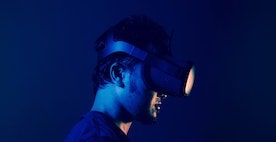
- Streaming
TIDAL and Amazon Music introduced spatial audio in 2019. Then in 2021 Apple Music introduced thousands of music tracks mixed in a spatial audio format. Apple’s adoption was a game changer. Spatial audio tracks and the number of tracks available are used by Apple Music and Amazon Music to get a competitive advantage in the streaming wars. Apple and Amazon are promoting it to artists and fans alike with editorial playlists and marketing. For artists, the financial benefit is more prominent placement on streaming playlists, which spotlight the services’ high-definition audio. Spatial audio tracks are available at no extra charge to their subscribers.
Artists, audio engineers and recording studios are reacting. According to Dolby, in March 2020, only 30 recording studios were equipped for mixing Dolby Atmos. Today the number is approximately 600! That’s a huge rate of adoption. Major labels are all-in on the new formats, sometimes steering performers to their own studios, like Universal Music’s Abbey Road in London and Sony’s Battery in New York.
Today we want immersive experiences, and producers in every sector, including virtual reality, music, podcasts, and gaming, are tapping the limitless potential of spatial audio.
So Exactly What Do We Mean by Spatial Audio?
When it comes to listening to music, most of us still listen to it in stereo. Stereo allows you to hear things from one dimension in the front, left, and right. With stereo sound you can’t get a sense of surround, height or sounds from below you.
Spatial Audio is any audio which gives you a sense of space beyond conventional stereo, allowing the user to pinpoint where a sound is coming from, whether this is above, below or a full 360 degrees around you. With the introduction of the 3rd dimension, you have a sense of the exact location of sound sources from all around.
Dolby Atmos is one of the audio formats that allow music makers to put audio in a 3D space during the mixing process. Previously, artists and their recording engineers would need to combine their music soundtracks from several tracks into two equally balanced channels used for a stereo track.
Atmos, for the most part, doesn’t use channels. Instead, most sounds are treated as “objects.” Instead of assigning a sound to a channel (and by extension, a speaker), Atmos lets producers assign a sound to a place. Not “left surround speaker” but “left rear corner.” Not “pan from left surround speaker to right sound speaker” but “pan smoothly across the rear wall.” Not only does this give greater flexibility, but it improves the experience in the theater and, potentially, at home.
Creators are no longer limited by the number of speakers or how they are arranged. Artists can designate where a sound is coming from and its distance, and the Dolby Atmos system will determine which speaker to play it from. This creates a much more immersive space for audio and gives enthusiasts the chance to design more complex speaker systems.
When listening to Dolby Atmos, a listener can hear directional audio from up to 128 channels that can be played to up to 34 separate speakers at once.
Audio Technology Companies Pushing the Envelope to Live Entertainment
John Couling, SVP of Entertainment at Dolby says, “We’re constantly trying to push the boundary of innovation.” One of those boundaries is live concerts.
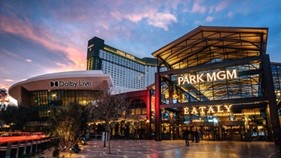
He states that “with most live events, the sound engineer is trying to create an even, mono experience in the space so everyone hears about the same thing no matter where they’re seated. With an Atmos concert venue, we’re giving the engineer much more control to play around with [instruments] in the space.”
It’s possible now, for instance, for the sound of a guitar to move around the Dolby Live at Park MGM on the fly as the engineer needs it. A guitar solo can be placed right down the center of the venue or dynamically flying around the room with each chord shift if that’s what the band and sound team want.
Another company trying to push 3D sound forward is Sennheiser. the German microphone and speaker manufacturer that was an early pioneer in binaural recording. Sennheiser’s Ambeo sound format offers a 9.1 channel immersive 3D mix that can be used in home audio setups, theater sound systems, and even specialized headphones.
The hope for Sennheiser and others toying with 3D sound is that in time, the technology becomes more commonplace. Its adoption requires costly hardware and engineering that smaller venues may not be able to afford. The hope is that with more exposure at venue, the sound experience could enhance live entertainment enough to attract more people and increase ticket prices to cover the additional expense of the technology.
Another European Company with proprietary spatial audio technology is Astro Spatial Audio. Their technology is scalable and offers new creative opportunities for object-based 3 D Immersive sound. The unique thing about their solution is that it’s been built specifically for life on the road. The technology is fully scalable from one venue to the next, meaning Astro claims its system will quickly and easily adapt to the environment in which you’re working including a web-based GUI that’s so intuitive it can be mastered in minutes.
3-Dimensional Audio Use for Live Concert Events: It’s Here
It’s changing the live entertainment event experience from stereo sound
-
- For many years, Suzanne Ciani, an electronic music creator has performed using a quadrophonic sound system: a setup that uses four primary speakers placed in the corners of the venue, which allows the music to be split into four channels. The audio, not unlike that of a surround-sound home theater, can travel around you in a way that standard stereo systems can’t. One sound might come from behind you, while another chimes in from above or in front of you.
“People love quad,” Ciani tells me. “But it’s hard to get sometimes. You have to fight with the venue. You have to fight with the promoter.” For now, electronic artists like Ciani have to demand it on their tech riders at shows.
-
- The Dolby Live at Park MGM in Las Vegas. It’s the first-of-its-kind fully integrated Dolby Atmos audio system with 402 speakers and one of the widest stages in the world at 140 feet wide. The venue has 5,200 seats with the furthest seat being only 145 feet from the stage. Aerosmith and Usher have residencies scheduled for this state-of-the-art venue. Other artist playing there this year include The Who and Silk Sonic.
- Recently an immersive audio venue in San Francisco opened with a 28.4 channel sound system that specializes in immersive 3D audio. The venue’s 28-speaker “Ambisonic” system has also been adapted to a mobile sound space called Envelop Satellite, which can be deployed at music festivals and other temporary locations.
- Grammy-winning artists like Bon Iver have used the L-ISA technology at The YouTube Theater in Inglewood, California. Frontman Justin Vernon said it’s changed how their engineer interprets their music for the audience. “The first time we got to use L-ISA, in Santa Barbara, he came right up to me and said that’s the best show you ever played, and it has a lot to do with that sound system,” Vernon said.
National Sawdust, in Brooklyn NY, is a flexible music venue that can accommodate audiences of up to 150 seated or 250 standing. It’s equipped with spatial-audio technology. It uses spatial sound and electronically adjustable acoustics to enrich its music events. The entertainment runs the range from pop, to classical, to experimental, and everything in between.
- Las Vegas’ AREA15 Immersive Entertainment and Events Complex recently opened, and it’s using both a multichannel overhead system and ground-mounted line arrays to deliver immersive audio content, working with musicians such as Max Cooper.
Can Spatial Audio Change Live Music Entertainment?
The answer is that more and more venues will adapt to spatial audio as costs of the technology continues to decline. Who would have thought that recording studios would have adopted the technology as rapidly as they have? After experiencing it in places like the Dolby Live at Park MGM, I expect many major stars will adopt the technology as part of their shows. It could be a game-changer for their live music “experiences.” The big acts are always looking for more elaborate production spectacles for their tours. As video and lighting have gotten more advances, spatial audio could be just the next big thing to attract audiences.
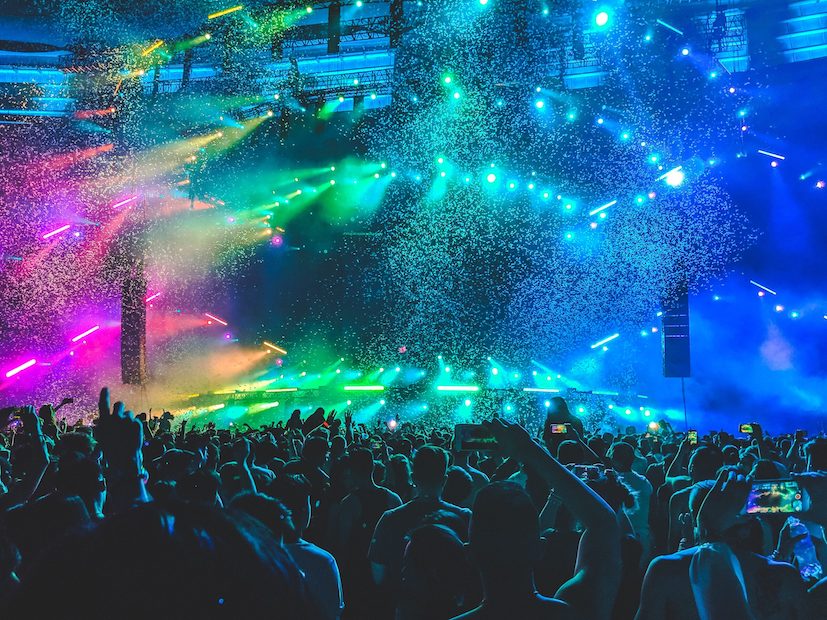
Spatial audio can give audiences a deeper connection that will need to truly experienced live. Immersive audio allows us to listen within the music together, amplifying the social and emotional impact of music while increasing artists’ creativity. Immersive audio allows us to listen to music in the same way we experience the world; in three dimensions
For more information, Abbey Road Studios initiated the Spatial Audio Forum, where you will find great articles about this topic.
Related Blogs:
4 Key Audio Specs for Outdoor Concert and Festival Production
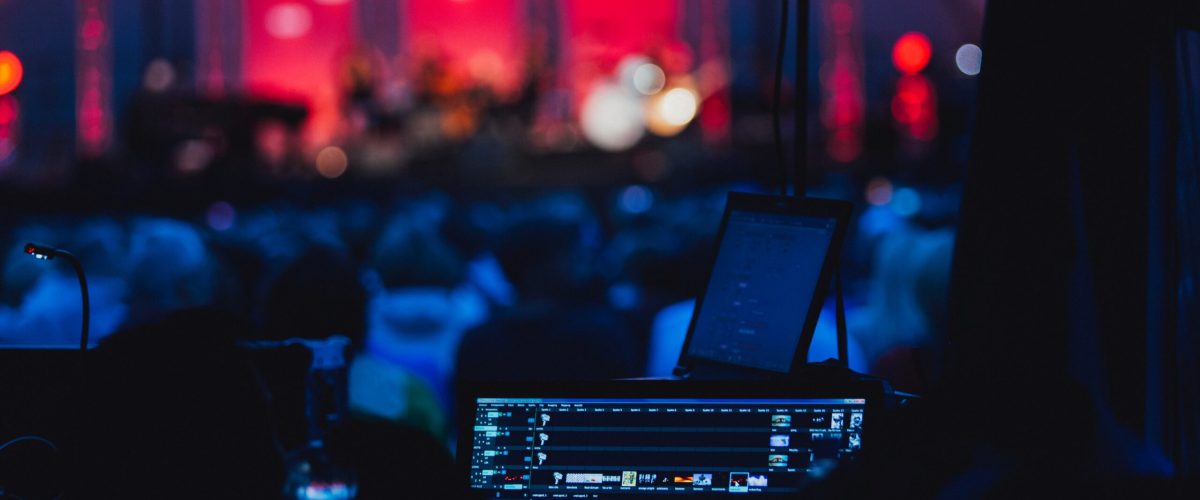
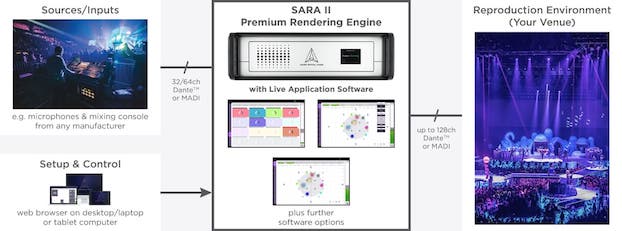
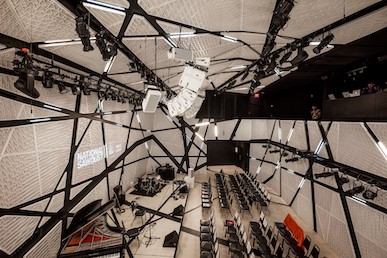 National Sawdust, in Brooklyn NY, is a flexible music venue that can accommodate audiences of up to 150 seated or 250 standing. It’s equipped with spatial-audio technology. It uses spatial sound and electronically adjustable acoustics to enrich its music events. The entertainment runs the range from pop, to classical, to experimental, and everything in between.
National Sawdust, in Brooklyn NY, is a flexible music venue that can accommodate audiences of up to 150 seated or 250 standing. It’s equipped with spatial-audio technology. It uses spatial sound and electronically adjustable acoustics to enrich its music events. The entertainment runs the range from pop, to classical, to experimental, and everything in between.


